“Queen Christina” – Abdication of Divine Greta
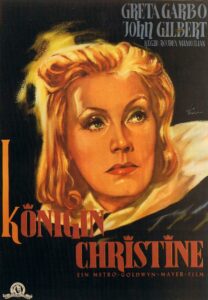
Title: “Queen Christina”
Release Date: 1933
Director: Rouben Mamoulian
Cast: Greta Garbo, John Gilbert, Ian Keith, Lewis Stone, Elizabeth Young
“Queen Christina” is a film in which Greta Garbo created one of her greatest iconic roles. The story of the Swedish ruler, for obvious reasons, the audience read through the prism of the biography of the actress herself. For here we have a Swedish monarch associated with the Scandinavian queen of cinema. All the more significant was the climactic scene of the ruler’s abdication, which, viewed years later, is even a prophetic foreshadowing of Garbo’s abandonment of the film.
“Queen Christina” – a ruler of the Vasa dynasty
The story of the real seventeenth-century Queen Christina is not as romantic as the film one, but certainly just as interesting. The monarch came from the Vasa dynasty, and was the daughter of Gustav II Adolphus, who was killed at the Battle of Lutzen during the Thirty Years’ War. The young monarch inherited the throne at the age of just six, and was crowned when she was 18. Christina was a very independent lady and had no intention of marrying, which obviously prevented the appearance of an heir to the Swedish crown. It is known that the young ruler was in love with her courtesan, Ebba Sparre, but it was not homoerotic inclinations that determined her abdication at the age of 27.
To this day it has not been established with certainty, as indicated by testimony, whether Christina felt herself to be a man in a woman’s body. Nevertheless, she certainly felt a distinct aversion to marriage, which led her to take an interest in the Catholic religion. For it was in Catholicism, as opposed to Protestantism, that she found a special appreciation of maidenhood. The cult of holy virgins, starting with the Blessed Virgin Mary, strongly appealed to Queen Christina, who, in defiance of the prevailing creed, converted and eventually renounced the crown.
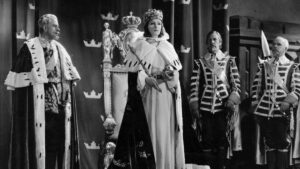
The film, directed by Rouben Mamoulian, deviates slightly from historical truth, as it shows that the reason for the ruler’s abdication was her love for Spanish deputy don Antonio de la Parada. Playing the title character, Greta Garbo, unable to marry her chosen one, and at the same time wanting to avoid a bloody revolt by her subjects incited by her former lover, gives up the scepter and intends to leave with her beloved to Spain. However, not everything goes her way: Antonio dies in a duel with Magnus, her former suitor, and she sails off alone into the unknown.
“Queen Cristina” – Greta Garbo and John Gilbert together again on the big screen
“Queen Christina” is one of the most important works of cinematography, and the outstanding role of Greta Garbo certainly went down in history. The actress was at the height of her fame and career at the time, and thanks to a favorable contract with MGM, she was able to influence both the direction and casting of the film. Initially her partner was to be played by Laurence Olivier, but after several attempts the actress did not accept his candidacy. Thanks to Garbo, the role of Antonio was played by John Gilbert, a star with whom she was once linked by a famous Hollywood romance. It was an incredibly empathetic gesture on the part of the star, as Gilbert was in dire straits at the time – both professionally and personally. Advanced alcoholism was ravaging his body, and a failed debut in a sound film caused a complete career collapse.
Garbo not only forced the studio to hire Gilbert, but also constantly helped him on set, covering for his indisposition. When John didn’t show up for the shoot because he was unable to control his torsion, she also took the liberty of distracting from the actor’s indisposition. In the end, it must be admitted that Gilbert performed exceptionally decently on screen. His voice did not sound squeaky at all, as critics had previously accused him of. To this day, moreover, it is not clear whether Gilbert’s defeat in the sound film was due to his voice, or whether his conflict with Mayer influenced the record company’s deliberate plunging of the star….
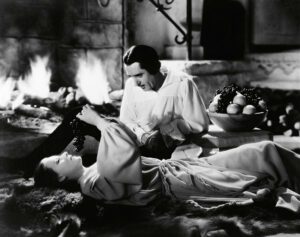
“Queen Christina” – an icon of modern womanhood
“Queen Christina” is a story set in the 17th century, but its cinematic presentation appeals to modern audiences. Moreover, such an image of the monarch has a lot in common with the historical figure. It is known, for example, that the Swedish was a highly educated and intelligent person, spoke several languages and was more interested in the flourishing of the country in peace than in waging wars. Garbo brilliantly reflects these qualities of Christina – she is sensational in her dialogues, monologues and cutting retorts, which betray the extensive knowledge and erudition of the heroine. She is a queen who is well acquainted with European literature and art, and for lack of time for reading, she gets up before dawn to enjoy the works of Molière, at least for a while. Her cinematic portrayal is very convincing – the wise and courageous Christina comes off as extremely believable in the scenes when she defies the will of a parliament wishing to wage endless war, or when she faces an enraged mob and calms its anger with her speech.
The heroine’s personality is thoroughly contemporary and natural. This is not a typically melodramatic role, on the contrary: here we see an energetic, laughing Garbo who loves to have fun and enjoy life. Despite the dilemma of state importance, Christine recognizes that she is entitled to personal happiness, for which she does not hesitate to sacrifice the dynastic crown. She is a woman who is completely independent – in her thinking, decisions and actions.
“Queen Christina” – androgyne and homosexuality
Without a doubt, Garbo’s portrayal of Queen Christina has androgynous qualities. This is a woman whose favorite outfit is comfortable pants, and whose pastime is horseback riding. Of course, her very status as a monarch adds to her masculinity – after all, she is at the center of international politics and state decisions. The watchful eye of Hays’ censors also immediately spotted ambiguous scenes indicating the ruler’s lesbian inclinations. These include, first, the famous kiss on the lips between Garbo and Ebby Elizabeth Young, who plays the role of her courtesan. This scene is also accompanied by an intimate dialogue in which the girl complains that the queen neglects her and only stays around old men. Another notable situation is when Christine, pretending to be a man, is about to spend the night at an inn. Garbo sits on the bed and in front of her kneels the young maid Elsa (Barbara Barondness), who in a confidential gesture slides her hand over the thighs of the “young bachelor,” suggesting her sexual services to him.
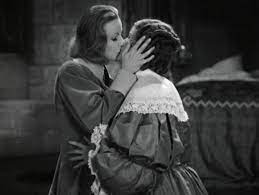
In turn, the very situation that leads to the queen’s affair with Antonio has gay overtones. Pretending to be a man, the ruler, due to the lack of places in the inn, offers her chamber to the Spanish MP – so they are going to spend the night in one bed. Only when the queen undresses to sleep does the truth come out. All these scenes became the object of fervent attacks by the censors, and their outright removal was demanded. But in the end, thanks to persuasion (including financial), they remained in the film.
“Queen Christina” – the sensual acting of Greta Garbo a legend of cinema
Without a doubt, Garbo in “Queen Christina” steals the entire film. A scene known as “the next morning” has gone down in cinema history, when the heroine wakes up after a night spent in the arms of a handsome Spaniard and goes around the entire bedroom, touching each object individually. Garbo moves her hand over the walls, the spinning wheel, the spindle, hugs the pillar supporting the canopy and finally throws herself on the bed, inhaling the scent of the bedding. When Antonio asks her what she is doing, she replies: “I’m learning this room by heart. In the future, in my memories, I will often stay here.” Not only does this scene provide a remarkably eloquent substitute for the sexual act, which could not be shown on screen at the time, but it is also the quintessential example of the soulful eroticism for which the divine Garbo was famous.
“Queen Cristina” – the abdication of Garbo
The entire film world also remembered the central scene of the abdication of Christina, who, instead of marrying her cousin in accordance with the will of parliament and the people, decides to renounce the crown. Garbo’s appearance (the costumes were designed by the irreplaceable Adrian), her truly majestic posture and the speech she delivered brought critics associations with the greatest theater divas of all time: Sarah Bernhardt, Eleonora Duse or Helena Modrzejewska. Garbo is undoubtedly the great heroine here, the undisputed queen of the screen – the divine Greta. Nevertheless, here we see the queen abdicating, and her words, in the context of the actress’s imminent abandonment of cinema, can be read prophetically:
“I am grateful for your loyalty, but there is a voice in our souls that tells us what to do. And we obey it. I have no choice.”
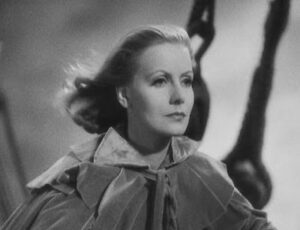
The queen takes off her crown and ermine cloak, gives back the insignia of power and sets out for the ship, where she is to meet Antonio. Unfortunately, wounded in a duel, her beloved dies in her arms. Despite her despair, Christine does not change her decision and leaves the country. In the famous last scene, the wind blows away the hair of the heroine standing on the bow of the ship, and she looks into the unknown. Garbo’s face is impenetrable – what is she thinking about? What is hidden in her heart? This will forever remain a mystery, as will she herself – the divine Greta, the abdicating queen of cinema.
Literature:
B. Paris, “Garbo: A Biography”, 1995.
D. Bret, “Greta Garbo”, 2012.

